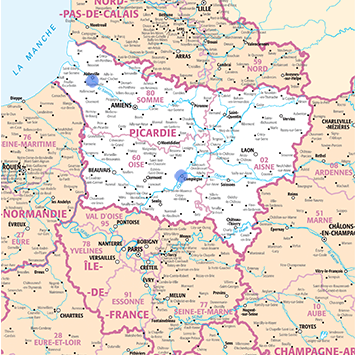Picardy is...- wild & beautiful
- wild & beautiful
Origins
Our vision of France is deeply entrenched.
In Oise…
Compiègne
In Oise, Picardy, Compiègne is the town neighbouring the small and unique locality called Les Zocqs. Situated on the left bank of the Oise river, Compiègne occupies a privileged geographical position, less than 1 hr from Paris and in close proximity to one of the most beautiful forests in Europe. This has led it to play a significant strategic and military role in the history of Europe, notably marked by the signing of the Armistice on November 11, 1918. As the stage for major events in the history of France, Compiègne continues to be a city that cherishes its rich past while offering an exceptional living environment today. Dynamic university town, royal and Imperial city Compiègne boasts a striking Gothic flamboyant-style Town Hall, numerous museums including the Château, the Imperial Theater, historical sites, an equestrian racecourse, parks, and a variety of annual events such as the May 1st celebrations, Joan of Arc Festivals, and the start of the Paris-Roubaix race.
In Somme…
Abbeville
Crossed by the Somme River, gateway to the Baie de Somme (labeled Grand Site of France), Abbeville is 1 hr 30 from Paris, 2 hr from London, and 1 hr 30 from Belgium, but also 30 min. from the beach and 20 min. from the Crécy Forest (site of one of the battles of the Hundred Years’ War). Winner of the competition for the most beautifully flowered towns and villages in its category (less than 30000 inhabitants), Abbeville is home to several remarkable gardens, and in the heart of this flowery city, architectural masterpieces classified as a Historical Monuments, or inscribed on the UNESCO World Heritage List can be found.
These two locations are ideally situated to discover the rich history of France and the magnificent remnants of all eras that shaped France and still display its medieval, Renaissance and Second Empire magnificence.







